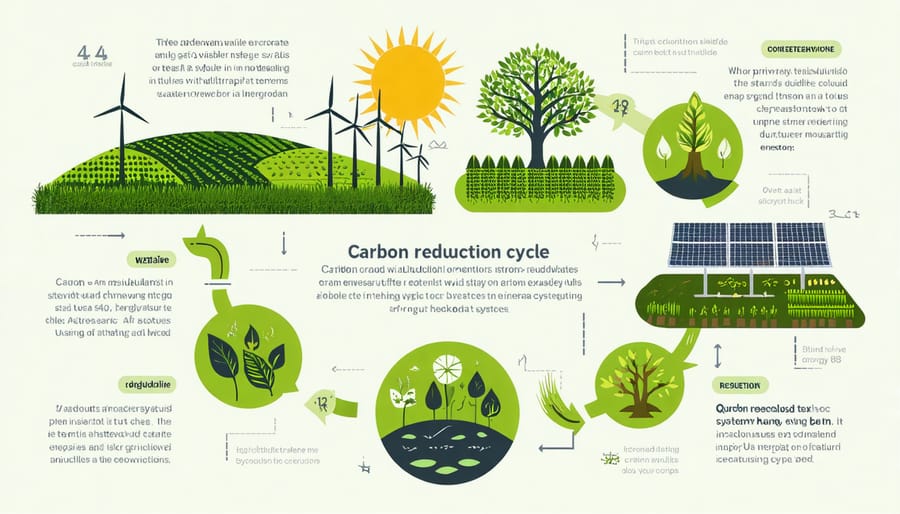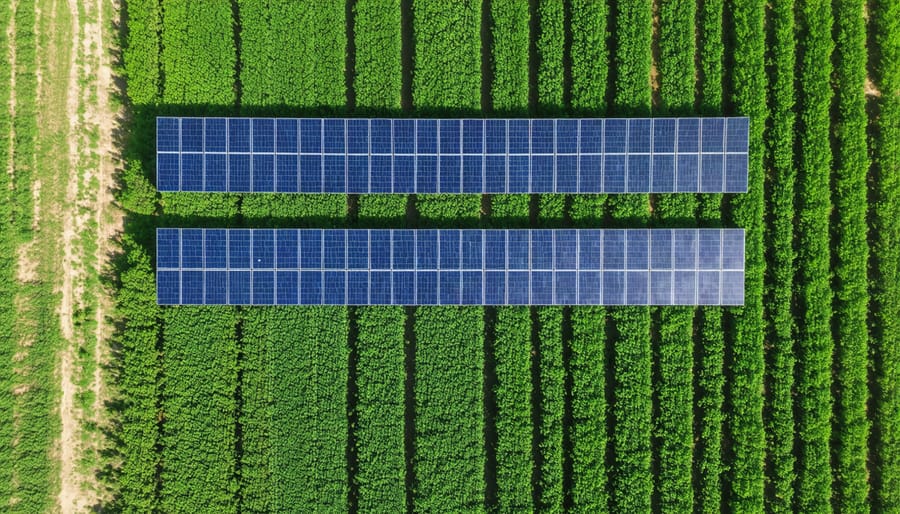At the intersection of quantitative modeling and biological discovery, the Q-Bio Conference stands as a pioneering platform where mathematics meets living systems. This annual gathering has emerged as the cornerstone event for researchers advancing our understanding of complex biological processes through computational approaches and global bioenergy innovations. Since its inception, the conference has catalyzed groundbreaking collaborations between mathematicians, physicists, and biologists, leading to transformative discoveries in fields ranging from cellular dynamics to ecosystem modeling.
Drawing together experts from premier research institutions worldwide, Q-Bio exemplifies the modern interdisciplinary approach to solving biology’s most challenging puzzles. The conference uniquely combines rigorous mathematical frameworks with cutting-edge biological research, creating a dynamic environment where theoretical insights translate into practical applications for sustainability, medicine, and environmental conservation.
As Australia positions itself at the forefront of biotechnology innovation, Q-Bio offers an unparalleled opportunity for local researchers and industry leaders to engage with global pioneers, share knowledge, and forge partnerships that drive forward our understanding of life’s fundamental processes through quantitative methods.
The Convergence of Agriculture and Bioenergy
Agricultural Biomass Innovation
A groundbreaking session at this year’s q-bio conference showcased innovative agricultural waste conversion technologies that are transforming farm refuse into valuable energy resources. Researchers from the University of Queensland presented their breakthrough findings on enhancing biogas yield from sugar cane bagasse, a major agricultural by-product in Queensland’s farming regions.
The conference highlighted how combining traditional fermentation methods with advanced enzymatic treatments could increase energy output by up to 40% compared to conventional processes. This discovery has caught the attention of several regional farming cooperatives, with pilot programs already underway in the Bundaberg region.
Another notable presentation focused on developing mobile processing units that can convert crop stubble directly in the field, addressing the common challenge of transportation costs. These portable units, dubbed “paddock-to-power stations,” represent a game-changing approach to on-site bioenergy production, making renewable energy more accessible to rural communities while reducing waste management costs for farmers.
The innovations presented demonstrate how agricultural waste can become a valuable resource, supporting both environmental sustainability and regional economic development.

Sustainable Farming Technologies
The conference showcased groundbreaking sustainable farming technologies that are transforming Australian agriculture. Solar-powered irrigation systems emerged as a key innovation, with presentations demonstrating how farmers can reduce energy costs by up to 40% while maintaining optimal crop yields. These systems use smart sensors to deliver precise amounts of water based on real-time soil moisture data.
Several speakers highlighted the successful integration of wind turbines on farming properties, creating dual-income streams for landowners while powering agricultural operations. A standout case study from South Australia showed how a 200-hectare farm achieved complete energy independence through a combination of wind and solar installations.
Biotechnology innovations also took center stage, with discussions about automated crop monitoring using AI-powered drones and robotics. These technologies help farmers identify potential issues early while minimizing resource waste. Particularly impressive was the presentation on regenerative farming practices enhanced by renewable energy systems, showing how traditional farming wisdom can be combined with modern technology for better outcomes.
The sessions emphasized practical implementation strategies, with experts providing clear roadmaps for farmers looking to transition to sustainable technologies. Cost-benefit analyses demonstrated that while initial investment might be substantial, long-term savings and environmental benefits make these technologies increasingly attractive for Australian farmers.
Environmental Impact Research

Carbon Reduction Strategies
At the conference, leading researchers presented groundbreaking strategies for reducing carbon emissions in agriculture, offering hope for a more sustainable farming future. A standout presentation from the University of Queensland showcased innovative soil management techniques that could potentially reduce carbon emissions by up to 30% while maintaining crop yields. The research demonstrated how combining biochar application with precision farming techniques creates a powerful approach to carbon sequestration.
Another significant contribution came from a team of Western Australian scientists who presented their findings on carbon-smart livestock management. Their research revealed that implementing rotational grazing patterns alongside native vegetation corridors could significantly decrease methane emissions while improving soil health.
The conference also highlighted promising developments in crop selection and modification, with researchers presenting new varieties of wheat and barley that require less fertiliser and water while maintaining high yields. These climate-smart varieties, developed specifically for Australian conditions, showed potential for reducing both carbon emissions and production costs.
The practical applications of these findings generated considerable excitement among attendees, particularly farmers and agricultural industry representatives looking to implement sustainable practices while maintaining profitability.
Ecosystem Conservation
At the q-bio conference, researchers presented groundbreaking studies on harmonizing bioenergy development with ecosystem preservation. A standout presentation explored innovative mapping techniques for identifying optimal locations for bioenergy crops while protecting critical wildlife habitats. Scientists from the University of Melbourne shared their success in developing dual-purpose landscapes where native vegetation corridors coexist with sustainable biomass production.
The conference highlighted several Australian case studies where careful planning led to increased biodiversity alongside bioenergy initiatives. One notable example from South Australia demonstrated how strategic placement of mallee eucalyptus for biofuel production created new habitats for local bird species while serving as wind breaks for adjacent farmland.
Discussions also centered on innovative monitoring systems using AI and drone technology to track ecosystem health in bioenergy production areas. These tools help ensure that biomass harvesting practices maintain the delicate balance of local ecosystems. Participants emphasized the importance of indigenous knowledge in identifying suitable areas for bioenergy projects while preserving culturally significant landscapes and traditional ecological systems.
The session concluded with practical guidelines for implementing biodiversity-positive bioenergy solutions, proving that renewable energy and conservation can work hand in hand.
Australian Success Stories

Farm-Scale Projects
The q-bio conference highlighted several remarkable farm-scale bioenergy projects that demonstrate practical sustainable energy solutions in action. One standout example is the Darling Downs farm in Queensland, where agricultural waste from cotton production is converted into biogas, powering both the farm’s operations and nearby communities. This innovative project has reduced the farm’s carbon footprint by 60% while creating additional revenue streams for the farmers.
Another inspiring case study presented at the conference was the Murray River Valley initiative, where a collective of dairy farmers implemented a shared biodigester system. By pooling their resources and organic waste, these farmers now generate enough renewable energy to power their milking operations and heating systems, with excess electricity feeding back into the local grid.
The conference also showcased the successful transformation of a Western Australian wheat farm, which integrated solar panels with bioenergy production from crop residues. This hybrid approach not only provides year-round energy security but also improves soil quality through the application of biochar, a beneficial by-product of the bioenergy process.
These real-world examples demonstrate how Australian farmers are leading the way in agricultural innovation, turning traditional farming challenges into opportunities for renewable energy production and environmental stewardship.
Research Breakthroughs
Australian researchers made significant waves at this year’s q-bio conference, showcasing groundbreaking developments in sustainable biotechnology. A standout presentation from the University of Queensland demonstrated a novel approach to enhancing biofuel production using engineered microalgae, potentially increasing yield by up to 40% while reducing water consumption.
The CSIRO team unveiled promising results from their work on drought-resistant wheat varieties, using advanced computational modeling to predict and optimize crop resilience. This research could revolutionize agricultural practices in arid regions across Australia and globally.
A collaborative effort between Monash University and the University of Melbourne presented innovative findings on soil microbiome enhancement, showing how targeted bacterial communities can improve carbon sequestration while boosting crop productivity. Their work garnered particular attention for its potential to address both food security and climate change challenges simultaneously.
Perhaps the most exciting breakthrough came from researchers at the Australian National University, who presented a new biological system for capturing and converting atmospheric carbon dioxide into useful biomaterials. This technology shows promise for both environmental remediation and sustainable manufacturing.
The Western Australian team from Murdoch University also shared their progress on developing salt-tolerant food crops, presenting a potential solution for farming in areas affected by rising soil salinity.
The q-bio conference has emerged as a pivotal platform for advancing sustainable solutions in Australia’s agricultural and energy sectors. Through the engaging discussions and groundbreaking presentations, it’s clear that the integration of biological sciences with sustainable technologies holds tremendous promise for our nation’s future.
The conference has successfully demonstrated how cutting-edge research in bioenergy can address multiple challenges simultaneously. From innovative farming practices that enhance soil health while generating renewable energy, to breakthrough technologies in waste-to-energy conversion, we’ve seen how biological solutions can create a more resilient and sustainable future for Australia.
Particularly encouraging are the practical applications showcased by local farmers and industry leaders. Their success stories of implementing bio-based solutions have provided tangible evidence that sustainable practices can be both environmentally beneficial and economically viable. The adoption of these technologies is already helping reduce carbon emissions while creating new revenue streams for agricultural communities.
Looking ahead, the conference has highlighted several key pathways for Australia’s sustainable development. The emphasis on regional collaboration and knowledge sharing between scientists, farmers, and industry professionals sets a strong foundation for future innovations. The growing interest in biomass energy production, particularly in rural areas, suggests a bright future for decentralized, sustainable power generation.
Perhaps most significantly, the conference has reinforced the importance of biological approaches in building climate resilience. As Australia faces increasing environmental challenges, the solutions presented here offer practical ways to adapt while contributing to global sustainability goals.
The momentum generated by the q-bio conference extends beyond the event itself. It has catalyzed new partnerships, inspired innovative research directions, and demonstrated that Australia can be a leader in sustainable agriculture and renewable energy. As we move forward, the insights and connections formed here will continue to shape our nation’s journey toward a more sustainable and prosperous future.
The call to action is clear: by embracing these biological solutions and continuing to innovate, Australia can build a more resilient agricultural sector while leading the way in sustainable energy production. The future of our environment and economy depends on our ability to implement these insights effectively and collaboratively.

